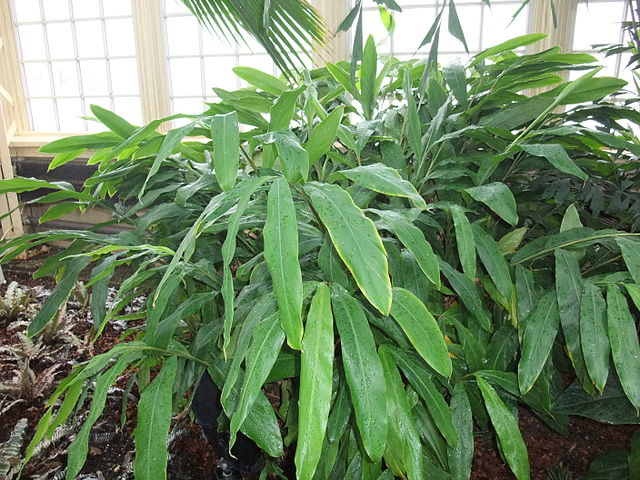Cardamom, Small Cardamom, Green Cardamom
Elettaria cardamomum
Family: Zingiberaceae | Place of Origin: Western Ghats of South India
Origins and history:
The use of cardamom fruits dates back to second century BC in ancient Greek text, however the distinguishable characteristics of the two types (cardamom and cardamom long) were made in the second century AD in Europe. Today cardamom ranks the third most expensive spice proceeding saffron and vanilla and is currently cultivated in India, Guatemala, Sri Lanka, and Tanzania.

Identification characteristics
- General: Cardamom grows in mid-elevations (600-1300m) in wet evergreen forests. It is seen as a large perennial rhizomatic monocot, in which the rhizomes bear leafy shoots around 4-5 m tall.
- Leaf morphology: Its leaves are alternate, sessile, very slender and 30-90 cm long. Shoots contain flowers that are around 5 cm in diameter, with greenish petals and a purple-veined white lip.
- Fruit and Floral morphology: The fruit itself is ovular shaped and contains 15-20 dark reddish brown to black hard seeds.
- Seed: The seeds are harvested from the oval capsule and then dried given off a highly aromatic sweet, spicy, subtle woody yet slightly minty aroma.
Uses and preparation
Cardamom is most widely known for its volatile oil, which on average accounts for 5% of the seeds total weight. With use of these volatile oils a rat study was conducted which concluded that cardamom oil processes a marked antispasmodic action that is shown to be used to relieve stomach pain, in particular irritable bowel syndrome. The study also revealed that cardamom oil also contains anti-inflammatory properties by showing a decrease in paw oedema within the rats. Another study revealed that cardamom has many anti-microbial properties particularly “anti-cavity” and for the treatment of acne. lastly, in Ayurvedic medicine cardamom is seen as remedy to caffeine. Cardamom seeds can be sucked on throughout the day in order to stop the craving for coffee during the withdrawal period. Cardamom displays no toxic concern since the chewing the seed like tobacco is common in many Arabic counties, like Saudi Arabia.